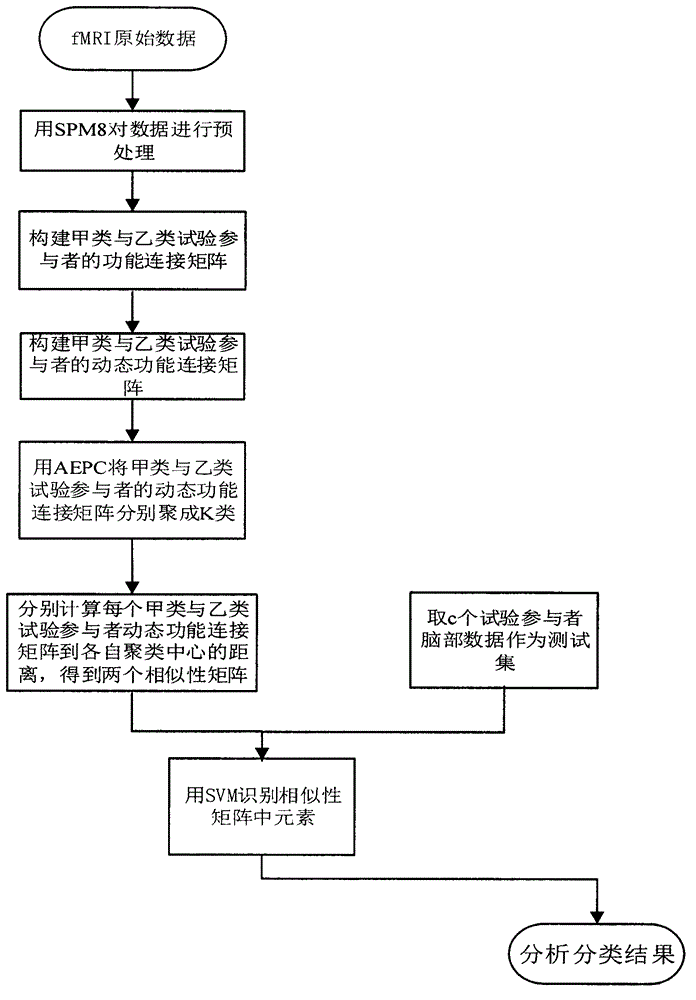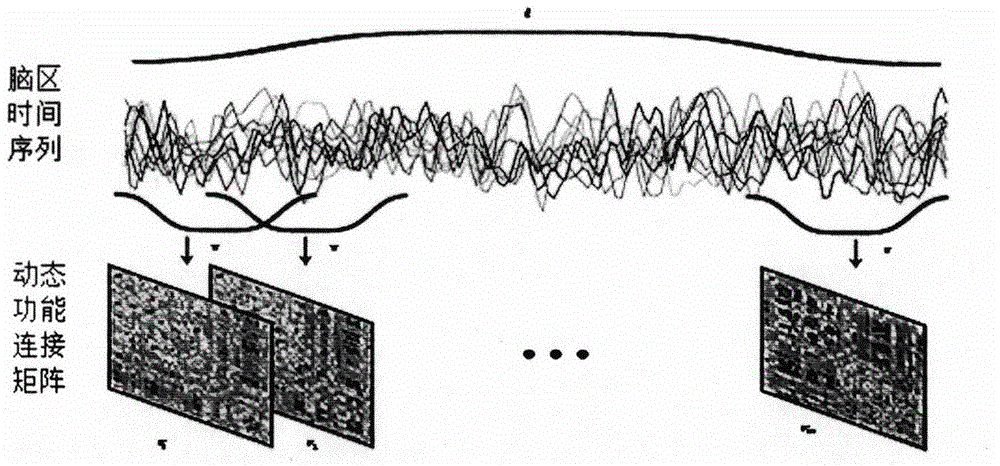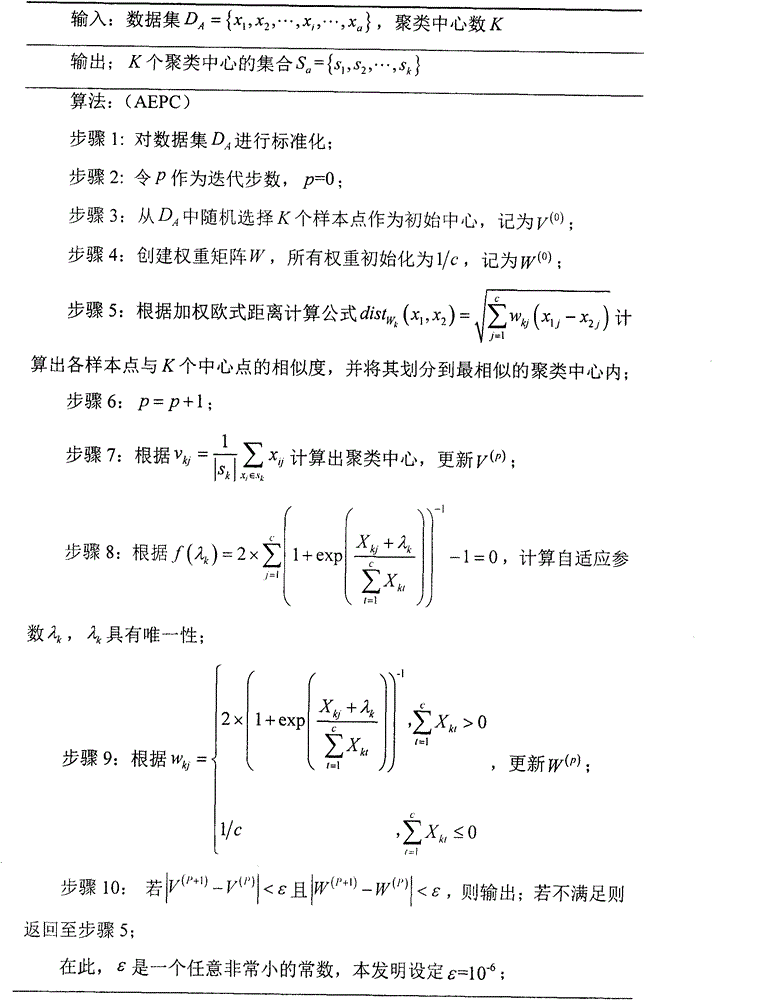Method for extracting and classifying fMRI features based on adaptive entropy algorithm for projection clustering (APEC)
A technology of adaptive entropy projection and clustering algorithm, which is applied in computing, computer components, instruments, etc., can solve problems such as poor clustering effect, inability to select the optimal clustering result, and the influence of subjective factors. The effect of objectively selecting questions, improving clustering ability, and clear physical meaning
- Summary
- Abstract
- Description
- Claims
- Application Information
AI Technical Summary
Problems solved by technology
Method used
Image
Examples
Embodiment Construction
[0027] In order to make the purpose and technical solution of the present invention clearer, the present invention will be specifically introduced below in conjunction with the accompanying drawings and specific embodiments. The functional magnetic resonance data of the brains of two groups of test participants of type A and type B with similar age and educational background were collected by magnetic resonance equipment in resting state scanning mode. Assume that there are currently 30 test participants whose brain status is Class A, and 30 test participants whose brain status is Class B, all of them are right-handed, and the brain function image data is scanned by the same instrument , the number of scan sequences is 224. In order to test the effectiveness of the algorithm, half of the test data of type A and type B were taken out as the training set data, and the remaining half was used as the test set. refer to figure 1 , a fMRI feature extraction and classification meth...
PUM
 Login to View More
Login to View More Abstract
Description
Claims
Application Information
 Login to View More
Login to View More - R&D
- Intellectual Property
- Life Sciences
- Materials
- Tech Scout
- Unparalleled Data Quality
- Higher Quality Content
- 60% Fewer Hallucinations
Browse by: Latest US Patents, China's latest patents, Technical Efficacy Thesaurus, Application Domain, Technology Topic, Popular Technical Reports.
© 2025 PatSnap. All rights reserved.Legal|Privacy policy|Modern Slavery Act Transparency Statement|Sitemap|About US| Contact US: help@patsnap.com



